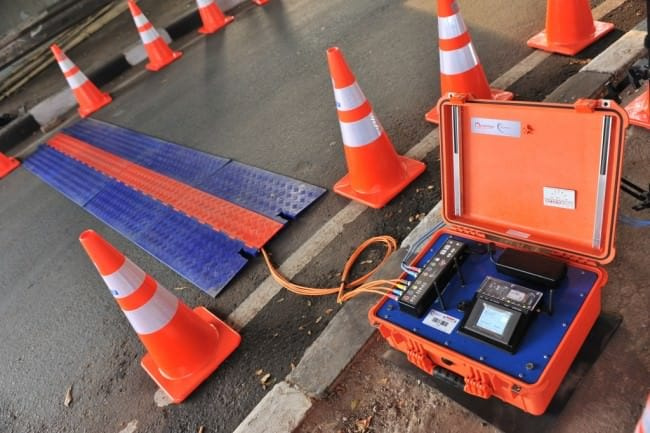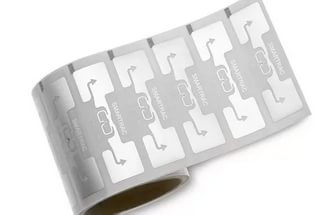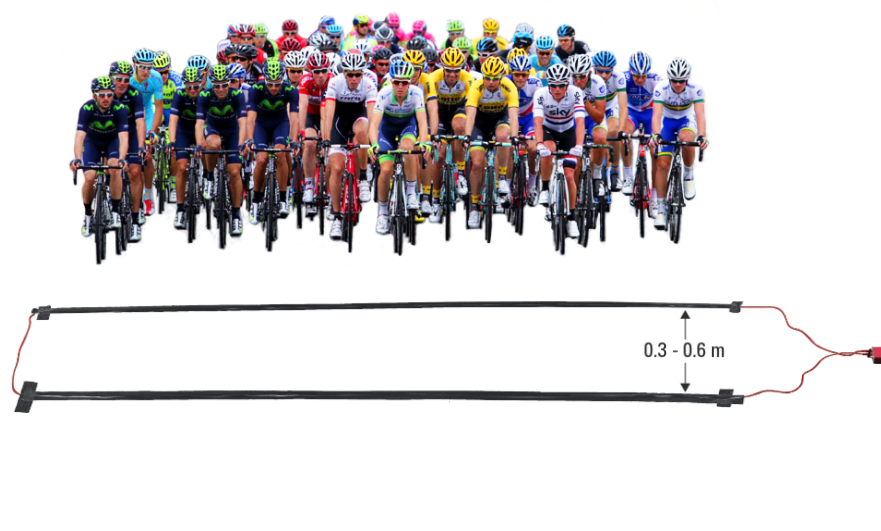Sports Timekeeping System - Equipment

Hello dear readers. This article will be a continuation of the conversation about the systems of sports timekeeping and timekeeping in general. But now I would like to go deep into the “iron” part of this process. So.
In general, timing and determining the time of an athlete implies fixing an electronic device on an athlete (hereinafter, we will call this device a “chip”, as is customary in the sports community) to record the time and identify the athlete, that is, the chest number or the number of the device itself, which is in the database becomes attached to the athlete.
If you roughly divide all timekeeping systems, you’ll get two categories: active systems and passive systems . There are many differences, but the most important thing is the presence or absence of a power source in the chip. Let's talk a little about these two systems in more detail.
Passive system

The passive system, as the name suggests, does not contain a power source in the chip. In order for the chip to work, it needs to transfer energy "through the air." This is the main problem of the passive system and this is associated with difficulties. To activate the chip and transfer energy to it, you need to use expensive high-frequency antennas.
It is about this system, we told in the previous article.
What are the advantages of the application?
Since the chip does not have a power source, it is a sticker on which the antenna and the chip are located. In fact, the chip is a commercially available label, similar to cards in the subway, only at a frequency of 860 MHz. Accordingly, their main plus is the price, in general, this is the reason for the use of the passive system.

Looking ahead, I will say that there is a downside:
- high cost of receiving equipment
- amount of equipment
- in fact, the inevitable need to design a chip detection zone for each event
The advantages arising from the chip price can be attributed to the fact that after the event there is no need to organize chip collection, i.e. they remain with the athlete, as they are mounted, as a rule, on the reverse side of the chest number.
Cons: accuracy and percentage of detection. The honest accuracy of such systems is limited to 1s. The detection percentage when installing one detection line is 95%. In order to increase this percentage, the timekeepers suggest either putting a duplicate line or mounting two chips on each athlete. Still, it will not give a 100% guarantee that the chip will be caught. Even large running events of 50,000 people share information about passes in 0.1% of the total number of participants, despite the fact that there is no shortage of equipment at such events and there are duplicate lines everywhere.
I am convinced that it is advisable to use such systems for events where it is practically impossible to use active, and generally no other timekeeping systems, due to the number of participants. For our reality, this number is 2,000 or more participants. Activities less, I think, should take place with active systems.
Active systems

This is a more advanced and more suitable system for determining the time of an athlete. We all see it in action on TV, at biathlon competitions for example. The chip looks like a wearable device, which is fixed, as a rule, on the athlete's foot. This is due not only to the ease of mounting, but also the accuracy of fixing time.

The advantages are obvious here: accuracy - honest 0.1 sec (depends on the sport, or rather, on the speed of crossing the line). For accuracy above one hundredth of a second, it is necessary to use optical means, in common "ray".
Disadvantages: the price ... the price of such a system is very decent: the chip costs 40-60U on average, the activation equipment is slightly cheaper than the passive systems. Well, the organizational minus is that these chips should be issued to athletes and then assembled, which, in fact, limits the use of the system at very large events.
This is briefly about the options "iron" for the organization of sports timekeeping.
5 years ago I began to build a passive timekeeping system, and my colleague @Surzhikov described it in detail in a previous article. Having traveled quite a long way, and serviced a sufficiently large number of large and not-so events, 1.5 years ago we concluded that there should be an active system in the arsenal of a professional timekeeper. Also, as before, we did not buy a ready-made solution, but began to develop the active system ourselves. About this, and in general about the active system in more detail, I think that I will write a separate article, in which I will describe in detail the fascinating process of creating a system, from idea to device.
All Articles